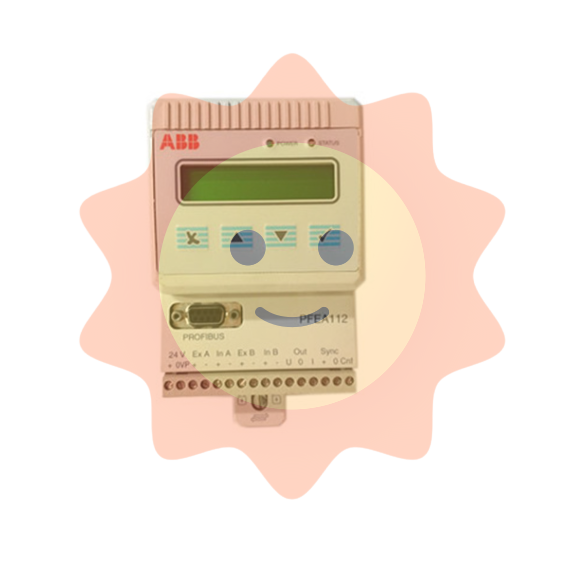Opportunities and challenges for the Indian Paper and packaging industry in the next decade
At the Annual general meeting of the Indian Pulp and Paper Technology Association (IPPTA) held in Hyderabad, members discussed the opportunities and future of the Indian paper industry over the next decade, shared their views and gave their views on the current challenges facing the Indian paper industry and how the industry can use different solutions to address them.
Mike Grundy, CEO of Amazon Papyrus Chemicals Pte LTD, sharing his views on the next decade of trade and paper industry across Asia, said: "First of all, we had heard about ESG before, but it was only about two or three years ago that our company started to pay attention to it. As a chemical company, we have to take it seriously and at the same time find that customers will also look at our ESG certificate. If we need to be their supplier, then we have to meet their standards. Anyone who thinks ESG is just 'icing on the cake' is sorely mistaken. Major brands and companies state and illustrate their sustainability goals in their statements and share how to achieve them. Sometimes there are costs involved, but most of our actions give us a return on investment."
"Moving away from single-use plastics is a huge opportunity for the pulp and paper industry. Currently, about 40 percent of packaging is made of plastic and about 30 percent is made of paper or fiber. This situation is conducive to changes in the paper industry and brings opportunities and challenges for everyone. "We produce 500 billion plastic cups and 260 billion plastic composite paper cups every year, and less than 1 percent of those composite paper cups are recycled." "He added.
In response to a question on growth and how to achieve it, Siddhartha Mohanty, Vice president and Head of the Bhadracharam division at ITC PSPD, said, "When we talk about growth, it has to be profitable. There are two types of growth in India: investment-led growth and consumption-led growth. In India, growth is based on consumption and we need to figure out how to improve consumption."

Before improving cost competitiveness, the first thing is to develop a raw material strategy. Raw materials are divided into three different types: waste paper, which the industry must develop a strategy for collecting as this is the main input cost; The second is wood, the industry should cooperate with farmers, farmers and society must be win-win; Agricultural disability needs supervision. This will have an impact on the industry, so it is imperative to start monitoring the agricultural landscape and developing strategies accordingly.
The second is technology. Technology must be constantly upgraded to meet international standards of quality. Technology comes with investment and is a capital-intensive industry.
Third, digital technology. Today, artificial intelligence and machine learning (AIML) are widely adopted in different industries to optimize operational parameters and performance. It reduces consumption and increases production.
Akshat Agarwal, director of Vijay Anand Kraft Paper Pte LTD, shared his thoughts on how paper mills can adapt to the changing demand and take this as an opportunity to expand the market for finished products. He said: "In the past 2-3 years, many factories have taken root in the field of kraft paper, with a capacity of 600-700 tons per day, requiring product standardization. We have to move to an international paper system based on corrugated and imitation cow cardboard, rather than BF paper, which is related to paperboard performance. Kraft paper roll width needs to be standardized. Currently, the rolls we sell vary in width by one centimeter, so that needs to change and needs to follow a more standard system. It will help the plant become more efficient and compete in the international market."
He added, "Under the Make in India programme, these companies set up factories in India and sell their products overseas. In India, people worry about the stench produced by kraft paper factories. The problem arose due to poor ETP design and the PCB being licensed for zero liquid discharge (ZLD). Recently, we have taken some steps to look at how we can use technology to eliminate the bad smell at the ZLD plant, and I am sure we will find some solutions."
"One of the factors that needs to be controlled is the content of long fibers in our finished products. Most factories in India are dominated by recycled paper, and even imported materials or recycled fibers from the United States and Europe have become brittle, or the amount of long fibers has been reduced due to recycling. We need to find a way to inject some of the long fibers into our paper, perhaps by using more virgin pulp or other wood alternatives like straw or bagasse, and maybe some technology that improves tearing or acts as an alternative to long fibers that might help, "he added.
"What's amazing is how new markets are opening up, such as how micro-corrugated is starting to become more and more important and compete with single cartons," he said. E and F are used in cosmetics, confectionery, daily chemicals and other fields. This is because of its excellent printing ability. The industry requires low paper weight and smooth surfaces, so white imitation cattle cards are being used more and more. Another application is barrier coated paper. We see a lot of trays for seafood, fruit and vegetables, sugar and flour packaging for export, which need to protect the contents from external moisture, so barrier coating paper has great potential and demand."

Akshay Ratti, director of Kegan Paper Mills Pte LTD, said: "There is a huge opportunity for sustainable development in the packaging industry. Paper consumption per capita in India is around 15 kg and is likely to grow to more than 30 kg in the coming years, compared to a global average of close to 60 kg. These figures alone show the scale of the Indian paper industry. Domestic consumption will help achieve growth through exports and the Indian government's goal of becoming a $5 trillion economy. Right now, India's economy is $3 trillion and we see opportunities coming in the next few years. There are huge opportunities as global supply chains become more integrated and manufacturing bases shift to India."
"In terms of exports, we see that wrapping paper can be exported. During the epidemic, the export volume of corrugated paper and imitation cattle cardboard wheels exceeded 200,000 tons per month and continued for several months. However, for various reasons, exports are difficult to maintain, there are odor, logistics, operating capacity, quality and other problems, if you work hard in these aspects, the packaging industry has a huge opportunity. India exports to Far East, Middle East, Latin America and African countries, and these exports are more out of necessity than choice because China has changed its raw material import policy, so for us to sustain these exports, we need to work on quality and the elimination of odors cannot be stressed enough."
He shared: "A recycled paper mill produces one ton of paper, consumes less than 300 KWH of electricity and uses less than 2 m ³ of water. The segment achieved these numbers, but they are not easy to digest. There are other areas where a lot can be done to save energy, such as installing rooftop solar plants and using biomass as fuel. Under the Swakhbarat mission, more emphasis has been placed on garbage collection and its disposal, not only at the company-wide but also at the level of Gram village councils. The processed waste can be used to turn waste into energy, and I think some government initiatives are promoting and funding local village councils and businesses to collect more waste."
Hadik Patel, Sales and Marketing Director of Om Sri Paper Arts LTD, said: "The target of sustained growth can be achieved in the small and medium-sized industries. One of the problems, however, is providing stability to customers. Nowadays, due to the lack of fiber, we are subject to the waste paper trade and we have to rely on local sourcing, which is an unorganized sector. The lead time for imported fibers is about 60 or 90 days, during which the paper collectors hold us by not supplying or raising prices, and in turn, we are unable to provide continuous stability in the market, thus creating uncertainty for the end customer."

Sharing how to achieve growth, Madure Desada, Director of Operations, Pallason Machinery (India) Pte LTD, said, "I will talk about three categories: how we will achieve growth in the next decade, how we will sustain growth and how AIML will achieve growth that will play a role in the future. There are more than 600-650 paper mills in India, and the average output of small, medium and large paper mills is about 150, 200 or up to 300 tons per day. Today, India has 60 pulp molding plants with an average plant size of 3-4 tons per day, so if you multiply 60 by 4, it is 240 tons per day, while in China, the average pulp molding plant size is 250 tons per day. This pulp molding industry is made for China and India because it is Labour and capital intensive and we need quality fibers, so I believe India has a good future."
He added, "The industry will be worth about $5 billion in the next one to two years, so I believe this will be a good opportunity for us to enter the industry, not only in pulp molding production, but also in pulp supply." Another 50-60 plants are coming to India, so any large plant, whether we produce sugarcane pulp, wheatgrass pulp or bamboo pulp, will be a good addition to the industry. Regarding sustainability, we need young people or new people in the industry. Educational institutions should be encouraged to offer courses in paper engineering. It can start with electives from last year, plus optional practical training, so that new blood can be injected into the paper industry and the right talent can be available."
- EMERSON
- Honeywell
- CTI
- Rolls-Royce
- General Electric
- Woodward
- Yaskawa
- xYCOM
- Motorola
- Siemens
- Rockwell
- ABB
- B&R
- HIMA
- Construction site
- electricity
- Automobile market
- PLC
- DCS
- Motor drivers
- VSD
- Implications
- cement
- CO2
- CEM
- methane
- Artificial intelligence
- Titanic
- Solar energy
- Hydrogen fuel cell
- Hydrogen and fuel cells
- Hydrogen and oxygen fuel cells
- tyre
- Chemical fiber
- dynamo
- corpuscle
- Pulp and paper
- printing
- fossil
- FANUC
- Food and beverage
- Life science
- Sewage treatment
- Personal care
- electricity
- boats
- infrastructure
- Automobile industry
- metallurgy
- Nuclear power generation
- Geothermal power generation
- Water and wastewater
- Infrastructure construction
- Mine hazard
- steel
- papermaking
- Natural gas industry
- Infrastructure construction
- Power and energy
- Rubber and plastic
- Renewable energy
- pharmacy
- mining
- Plastic industry
- Schneider
- Kongsberg
- NI
- Wind energy
- International petroleum
- International new energy network
- gas
- WATLOW
- ProSoft
- SEW
- wind
- ADVANCED
- Reliance
- YOKOGAWA
- TRICONEX
- FOXBORO
- METSO
- MAN
- Advantest
- ADVANCED
- ALSTOM
- Control Wave
- AB
- AMAT
- STUDER
- KONGSBERG
- MOTOROLA
- DANAHER MOTION
- Bently
- Galil
- EATON
- MOLEX
- Triconex
- DEIF
- B&W
- ZYGO
- Aerotech
- DANFOSS
- KOLLMORGEN
- Beijer
- Endress+Hauser
- MOOG
- KB
- Moxa
- Rexroth


Email:wang@kongjiangauto.com


























































































































